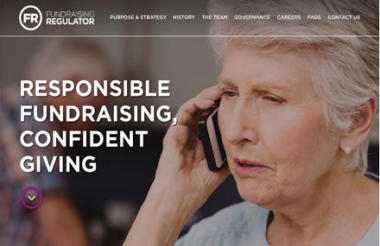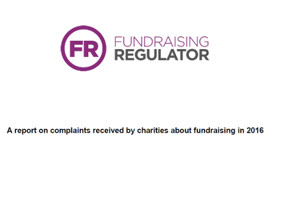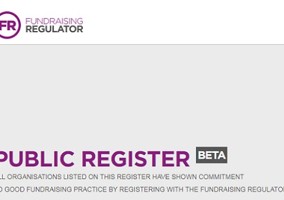The Fundraising Regulator published its first fundraising complaints report earlier this week. Hugh Radojev writes that while overall complaints appear to be down, this isn't the whole story.
Exactly a month and a day after the autumnal equinox, the Fundraising Regulator’s much-promised and long-awaited complaints report has been published. At a pinch, the main figures make for fairly easy reading for the sector: 42,782 complaints made to charities in the last financial year, down by over 20,000 from the previous year's report – that final regulatory flourish issued by the now defunct Fundraising Standards Board.
When broken down by channel, the regulator found that "direct marketing", including email, telephone and addressed direct mailings, accounted for over 16,000 of the total complaints, making it by far the most complained about channel.
It is worth noting, as the regulator does quite prominently in its report, that these 16,000 complaints rather pale in comparison to the more than 300 million pieces of direct mail reported to have been sent by the submitting charities. Whichever way you slice it, the vast majority of direct marketing activity undertaken by charities in 2016 did not result in a complaint from the public.
Fewer charities means fewer complaints
Perhaps the biggest issue with the regulator’s report is the number of charities that actually submitted information. The Fundraising Regulator received complaints reports from just 893 charities from across the various tiers of its levy on fundraising spend. It’s worth keeping in mind that the FRSB’s final complaints report was drawn together from information supplied by more than 1,500 organisations, including non-members.
The regulator’s report realises and addresses this disparity in reporting, saying: “It is important to note that, whereas in its annual return, the FRSB obtained information from its members; we obtained information from a proportion of those charities eligible to pay our levy. The charities participating are not therefore always the same as those contributing to previous reports published by the FRSB. It is not therefore possible or appropriate to make such direct comparisons with previous outcomes."
That is as may be, but what then exactly is the point of this report? The FRSB’s reports provided a useful benchmark for the sector, which could be easily used to spot trends in complaints, which could then be addressed accordingly.
The greatly reduced number of charities submitting complaints information this year is also problematic because it renders the key finding, the total number of complaints, essentially meaningless. At least, when viewed in the wider context of year-on-year complaints reporting undertaken previously.
Mid-range charities versus large charities
One of the more interesting findings of the report initially seemed to indicate that fundraising charities operating in the mid-range bands of the levy – in particular those spending between £2m and £4.9m a year on fundraising – reported the highest number of complaints.
This rather jarred with previous data from old FRSB reports, which indicated that the very largest charities accounted overwhelmingly for the total number of complaints made in any given year. Last year for example, the FRSB said that “two-thirds of all complaints” reported were generated by just 15 charities.
However, the definition of a large charity, or at least the metrics upon which such a classification is based, have clearly changed over the last 18-months or so. Indeed the FRSB considered charities with incomes of over £10m a year "major charities" and any organisations raising between £1m and £10m "large" organisations. Such qualifications seem relatively quaint.
The regulator’s levy bandings allow for more granulated assessments of a charity's size. The levy bandings are also of course based on total fundraising spend, not on income. Still, we're dealing in fruit here, even if they are apples and oranges.
As best as I can tell, the levy’s very top banding – organisations spending £50m or more a year on fundraising – is an exclusive club: definitely less than five charities, maybe even only two or three, appear to meet this criteria. That those handful of massive charities accrued the relatively low number of 6,207 complaints between them is certainly within the realms of possibility.
However, the report says that charities in the second levy banding – those spending between £20m and £49.9m a year on fundraising activities – accounted for less than 9,000 complaints between them in 2016. This seems, frankly, a little low. I cautiously estimate the numer to be around 20 and have asked the Fundraising Regulator for a full breakdown of how many charities fall within each band.
Even so, in a vain attempt to fudge the numbers and bring some sense to the universe, one could take the 6,207 complaints from the top-bracket charities and the 8,558 complaints from second-tier charities and add them together. Then one would get 14,765 complaints - outstripping the other bands. Parity restored, if only by cheating somewhat.
In the report, the regulator said it would be releasing guidance in 2017/18 setting out “our expectations for how charities should deal with complaints as well as providing a clear definition of what we consider to be a ‘complaint’”.
Charities Act amendments change everything
Besides, new reporting standards brought in by amendments to the Charities Act 2016 mean that more than 5,000 charities now have to report complaints in their annual accounts filed after November 2016.
Macmillan Cancer Support’s latest set of accounts for the year ending 31 December 2016, said the organisation received “over 4,000” complaints about its fundraising. Other large charities have also reported complaints in their 2016 year end accounts, including the British Heart Foundation (1,282), Great Ormond Street Hospital Children’s Charity (526) and the RSPCA (503).
Who then will be responsible for collating all of this information in the future? Given that many organisations will now have this information in their annual accounts, which are published with the Charity Commission, will it now fall to the Commission to take a closer look at these figures? That is no doubt a conversation to be had between the regulators.
Moving forwards, this year’s report may well be viewed in isolation. With the aforementioned changes in reporting standards now in force, perhaps the next complaints report will be far more thorough and drawn from more charities. Or perhaps the Fundraising Regulator will continue to only farm data from a selective group of levy paying charities, but focus more on the higher tiers.
The Fundraising Regulator has already indicated that it will evaluate its approach in the future.
Either way, you’d bet your house that the total number of fundraising complaints reported by charities next year will be more than 42,782. A great deal more, I’d imagine.
Related Articles












